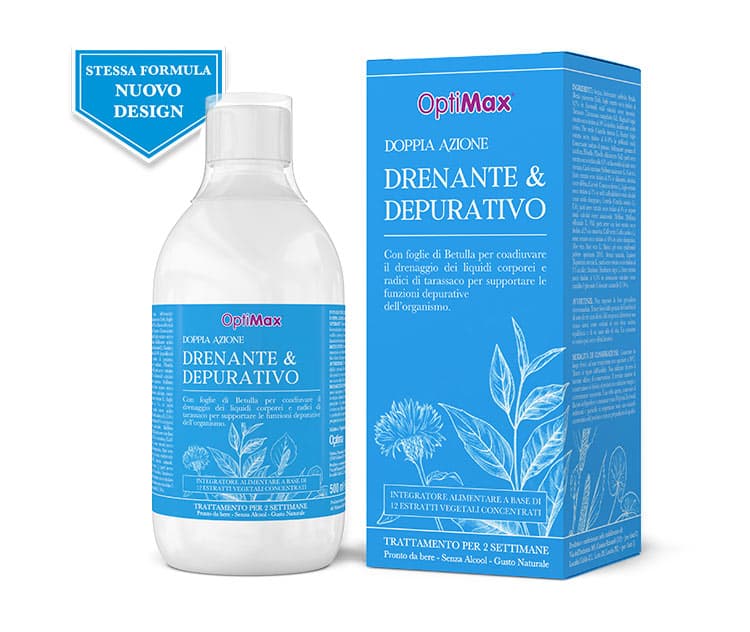
Optimax Draining & depurative
NATURALLY ELIMINATES EXCESS FLUID
Water retention is defined as a condition in which the body has a tendency to retain and accumulate fluid in the intracellular spaces, i.e. between cells.
Poor diet, a sedentary lifestyle, stress, hormonal imbalances, weight gain and cellulite can all contribute to a situation of retention, leading to the appearance of oedemas, which make the skin asphyxiated, less toned and less compact.
The kidneys, lymphatic and venous systems are responsible for the drainage of body fluids: these fluids, which are full of toxins and waste collected by the various tissue districts, must be eliminated in order to ensure a proper water exchange.
11 standardized and titrated phyto-complexes
- Pilosella
- Birch
- Centella
- Meliloto
- Elder
- Taraxacum
- Thistle
- Artichoke
- Green Tea
- Green Coffee
- Equisetum
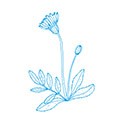
Pilosella (Hieracium pilosella)
Pilosella dry extract titrated in vitexin at 0,5%A small mountain herbaceous plant, growing in Europe, western Asia, northern Africa, part of the Asteraceae family.
Parts used: In phytotherapy this plant is used whole without roots, rich in mucilage, polyphenols, flavonoids, tannins, hydroxicoumarin; umbelliferone, coumarin, triterpenoid saponins, resins, essential oil, caffeic acid, chlorongenic acid.
Properties: Flavonoids can stimulate diuresis, elimination of sodium and chloride. This plant is renown in literature for its diuretic, draining and depurative action combined to antiseptic and anti-inflammation activities of the urinary tracts.
Indications: Pilosella extract is therefore used to contrast liquid retention and edemas typical of overweight and cellulite for its direct effect on a kidney level stimulating the excretion of water, sodium, chlorine and other impurities, without irritating the urinary tracts in any way.

BIRCH (Betula pendula)
Birch dry extract titrated in hyperoside at 0,3%Shrub from the Betulaceae family and original of Central Europe, Canada, Asia, with a typical white bark.
Parts used: The drug is made by its leaves, bark, young branches and buds. The fundamental principles include: tannins, saponins, vitamin C, flavonoids (betulin and hyperoside with diuretic and depurative properties), miricetin, nicotinic acid.
Properties: Birch features draining and depurative action as it promotes the expulsion of liquids in excess by affecting the sodium-potassium exchange on a kidney level. It can contrast urinary tract troubles thanks to the major elimination of chlorides and nitrogeneous waste.
Indications: Used to support and stimulate diuresis, with subcutaneous edemas typical of cellulite, overweight and premenstrual syndrome.
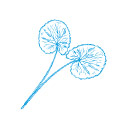
Centella asiatica (Centella asiatica)
Centella dry extract titrated in asiaticoside at 4%Perennial herbaceous plant, part of the Apiaceae family, grows spontaneously in humid areas of tropical and subtropical countries (India, Pakistan, Madagascar, Brazil, Venezuela).
Parts used: The drug is used and is made by leaves. Health principles: flavonoids, triterpenoid saponins (asiaticoside, Asiatic and madecassic acid, centelloside), sugars, amino acids, polyphenols, tannins.
Properties: Botanical studies confirm that Centella asiatica presents a particular trophism for the connective tissue and it can therefore physiologically stimulate synthesis of structural proteins of this tissue: glycosaminoglycans and fibrillary components (collagen and elastin). Specifically, Centella can promote the use of amino acids such as proline, hydroxyproline and alanine which represent 40% of the total amino acids of the connective itself. Its vasoprotective action improves the circulatory functionality while invigorating the vasal walls and reducing capillary permeability.
Indications: Its cicatrizing trophic and vasotonic action helps preventing and treating cellulite and liquid retention as it can enhance tissue repair and promote microcirculation wellness.

Meliloto (Melilotus officinalis)
Sweet clover dry extract titrated in coumarin at 2%Officinal plant part of the Fabaceae family, widespread in European countries with a temperate climate.
Parts used: the extract is made with its flowering edges and leaves, resulting in major positive effects on microcirculation, rich in coumarin, flavons, glucosides (melilotic), tannins, resins and starch.
Properties: the main effect of Sweet Clover is lymphatic draining with an improvement of circulation troubles; as a consequence, there is also a tonic effect on microcirculation, very useful with cellulite. It also works as sweeper of protein residuals present in tissues, thus preventing their buildups and formation of edemas.
Indications: the extract of Sweet Clover can offer many benefits for circulatory problems and for treating cellulite.
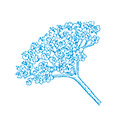
ELDER (Sambucus nigra)
Elder dry extract titrated in anthocyanins at 6,5%3-5 m tall shrub, part of the Caprifoliaceae family and original of Europe, Asia, northern Africa.
Parts used: The main components of its fruits are polyphenols among which: anthocyanes (3-o-glucoside cyanes, 3-o-5-o-diglucoside cyanes, 3-o-sambubioside cyanes, etc.), flavonoids (hyperoside, isoquercetin and rutoside); vitamins and mineral salts, especially potassium and calcium.
Properties: Clinical research has proven that anthocyanins act on vasal walls, enhancing the normalization of capillary permeability and increasing their resistance; they feature a natural anti-inflammatory activity against edemas typical of cellulite deposits. The ripe berries have also a diuretic and depurative effect as they are rich of potassium salts.
Indications: Its diuretic and depurative action can promote proper elimination of excessive liquids. The enhanced venous flow results in a tonic effect on circulation and improves edemas caused by liquid staunching typical of cellulite. Prevention of cell aging.
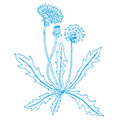
TARAXACUM (Taraxacum officinale)
Taraxacum dry extract titrated in inulin at 10%Small plants widespread in Mediterranean countries and part of the Asteraceae family; easily identifiable by its yellow flower with small and thick bunched petals.
Parts used: Its roots are rich in functional ingredients: heteroside glucosides (taraxacin or taraxacerin), colin, inulin, poxyphenylacetic acid, alcaloides (taraxin), triterpenes (taratol, taraxerol), flavonoids (apigenin and luteolin), eudesmanolide (sesquiterpene lactones), mineral salts (potassium).
Properties: Taraxacum has choleretic (promotes bile production) and cholagogic (promotes emptying the biliary vesicole) properties. It has been scientifically demonstrated that the taraxicin bitter principle causes an increase of bile production. Taraxacum features bitter-tonic, hepatic-protective, diuretic and digestive properties. Its diuretic action is mainly due to eudesmanolides and high percentages of potassium.
Indications: useful for liver problems, digestion troubles and water retention. The hepatic-protective and depurative action promotes elimination of toxin buildups, thus supporting the organism during periods of greater efforts.
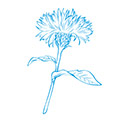
THISTLE(Silybum marianum)
Thistle dry extract titrated in sylimarin at 2% Annual herbaceous plant belonging to the Asteraceae family, widespread in central and southern Italy.
Parts used: The parts used are the leaves and the fruits, improperly called seeds. The functional principles contained are: silymarin, apigenin, oleic, linoleic, myristic, palmitic, mucilage, tannins, vitamins, tyramine.
Properties: the activity of the Cardo Mariano is mainly hepatoprotective and colagogue.
Indications: The milk thistle can be usefully used as hepatoprotector and detoxifying agent
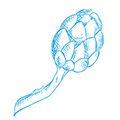
ARTICHOKE (Cynara scolymus)
Artichoke dry extract titrated in chlorogenic acid at 1%Herbaceous plant part of the Asteraceae family, original of the Mediterranean area and then spread to the rest of the world.
Parts used: herbology exploits the fully-grown leaves. Its health molecules featuring a strong action especially on liver, are: polyphenols, cynarine, cynaropicrin, chlorogenic acid, caffeoylquinic acids, dicaffeoylquinic acids, flavonoids, potassium, magnesium, calcium.
Properties: artichoke features a choleretic, hepatic-protective and hepatic-stimulating action, as it supports blood circulation and regeneration of liver tissues for natural restoring of the hepatic functionality. It also features a light diuretic effect caused by the presence of potassium salts.
Indications: it offers great benefits when used as depurative, detoxifier, hepatic-protector and hypocholesterolizer, as it physiologically regulates the levels of cholesterol in blood.

GREEN TEA(Camellia sinensis)
Green Tea dry extract titrated in polyphenols at 8-10%Evergreen shrub part of the Theaceae family and original of the Chinese region, known and cultivated since ancient times. Green Tea is obtained by steaming and drying its fresh leaves at high temperature so as to prevent fermentation and stabilize and preserve the polyphenolic fraction.
Parts used: Its leaves have a high percentage of polyphenols: catechins, epicatechins, quercetins, with a strong anti-oxidizing action; alkaloids: caffeine (theine), theophylline and theobromine; saponins; vitamins; minerals and low contents of minerals: zinc, manganese, potassium, magnesium.
Properties: phytocomplex of Green Tea for its natural lipolytic action due mainly to the xanthinic bases (caffeine, theobromine) and because it can limit sugar absorption.
Indications: In view of its natural thermogenic action, Green Tea can physiologically stimulate the mobilization of fat acids from the adipose tissue and promote excessive fat loss. The anti-oxidizing action justifies its potential use as vascular protector and against free radical damages.
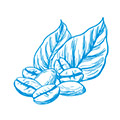
GREEN COFFEE (Coffea arabica)
Green Coffee dry extract titrated in chlorogenic acid at 10%Small evergreen tree original of Ethiopia and part of the Rubiaceae family, widely cultivated in Central America.
Parts used: The phytotherapic extracts are obtained from the ripe seeds. High percentage of polyphenols (chlorogenic acid, caffeic acid), tannins, caffeine.
Properties: Modern phytotherapy research has identified the phytocomplex of coffee, specifically chlorogenic acid and the natural capacity to positively affect sugar levels in blood (metabolism increases and absorption diminishes, thus enhancing weight loss).
Indications: Weight control, anti-cellulite treatment, anti-aging.

EQUISETUM (Equisetum arvense)
Dry extract of Equisetum titrated in silica at 1%Herbaceous plant part of the Equisetaceae family.
Parts used: Whole plant without roots containing: flavonoids (apigenin, luteolin, quercetin), silicic acid, chlorogenic acid, potassium, selenium, magnesium, manganese.
Properties: It features a strong remineralizing effect, useful to prevent depauperation of mineral salts, which are precious and indispensable for the organism in case of excessive loss of liquids through diuresis or perspiration. Its diuretic action is as interesting, for its high content of potassium salts.
Indications: Remineralizing, draining.
Gluten free
Alcohol free
Natural taste
Ready to drink
Suitable for vegans
Mean contents
Table mean contents for max daily dose (50ml)
| Birch d.e.* Of which hyperoside |
175 mg 0,525 mg |
|---|---|
| Dandelion d.e.* Of which inulin |
140 mg 14 mg |
| Green tea d.e.* Of which polyphenols |
70 mg 5,6 mg |
| Pilosella d.e.* Of which vitexin |
35 mg 0,175 mg |
| Thistle d.e.* Of which sylimarin |
35 mg* 0,7 mg |
| Artichoke d.e.* Of which chlorogenic acid |
35 mg 0,35 mg |
| Centella d.e.* Of which asiaticoside |
35 mg 1,4 mg |
| Sweet clovery d.e.* Of which coumarin |
35 mg 0,7 mg |
| Green coffee d.e.* Of which chlorogenic acid |
35 mg 3,5 mg |
| Horsetail d.e.* Of which silica |
14 mg 1,4 mg |
| Elder d.e.* Of which antocianins |
14 mg 0,91 mg |
ORGANISM DEPURATION AND DETOXIFICATION
Are physiologic and fundamental mechanisms to ensure daily and constant physical wellbeing of every individual. Liver is the most affected organ involved in this depuration process, as it purifies blood from numerous toxins and impurities thanks to the hepatic cells. Liver is essential for digestion as it produces liquid bile, a yellowish-greenish fluid which emulsifies the fats ingested when eating and makes their absorption easier; bile also promotes the absorption of liposoluble vitamins (A, D, E, K). According to the above, a good hepatic functionality implies an efficient detoxing action, as the excessive buildup of toxins may cause tiredness, digestion problems, weight gaining, opaque and grayish skin. Of course the liver must not be stressed from a metabolic standpoint for a good hepatic functionality. That is why a well-balanced diet, physical exercise, controlled consumption of alcohol can all contribute in helping the liver perform its regular functions without suffering from heaviness.

 Draining & depurative
Draining & depurative